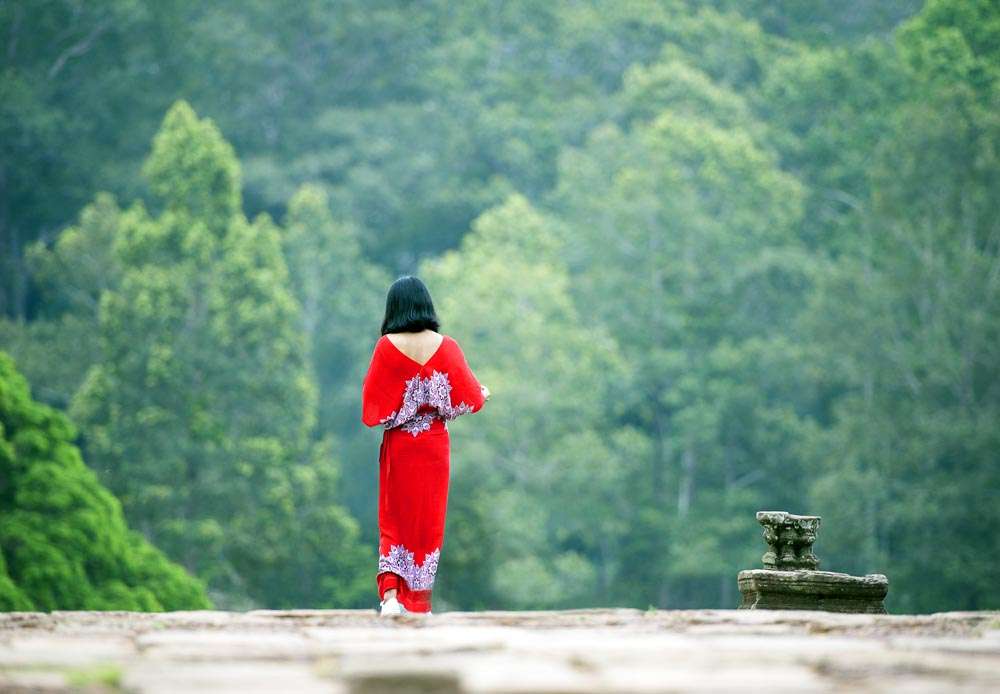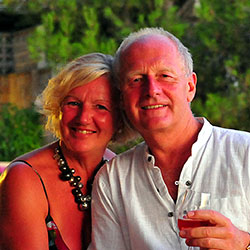The temples of Cambodia’s Angkor Wat complex are a fascinating insight into ancient kingdoms that now appear to owe as much to Indiana Jones and Lara Croft for their fame as any factual history.
If we were under any illusion that Angkor Wat would be a quiet exploration through tumbling vine-clad stones in an impenetrable jungle, we were much mistaken.
Our visit to Siem Reap, site of the Angkor Wat complex, coincides with a major Buddhist festival, which means that Cambodians from miles around, as far as Phnom Penh, congregate to pay their respects in the pagodas and temples that surround the area.

It’s a major family event and the roads to the pagodas are clogged with diesel belching vehicles that make our open tuk tuk ride less than attractive.
 Do be aware – if you’re thinking of doing your own thing – that you can’t just pitch up at any of the various sites and expect to gain entry or buy a ticket individually at each.
Do be aware – if you’re thinking of doing your own thing – that you can’t just pitch up at any of the various sites and expect to gain entry or buy a ticket individually at each.
You’ll need to purchase a full complex ticket at the main centre in Siem Reap, which generates a photo pass that permits entry across the complex.
If you didn’t know already – according to our Cambodian guide – pagodas house an effigy of Buddha, whereas temples often contain artefacts, as do Stupas but the two latter differ in design and construction from one another and temples are often shrines to the spirits (or Nats) rather than Buddha – clear? We’ve since read several alternative explanations but our guide’s plans seemed to allow for the numbers of people that frequent each and so avoids the crowds.

Despite the crowds it is possible to find quiet and attractive scenes
The upshot of this is that the Pagodas are packed, whereas the temples empty pretty quickly during the morning when families set out their picnics by the lakes.
Angkor Wat is not just a single site but a collection of numerous quite individual buildings and ruins in a variety of locations that cover over 150 square miles.

Your drive between the various sites can also be interesting and not a chore, both in terms of the landscapes of rice paddies and local novelties such as the practice of selling petrol from stalls by the roadside – in gin and whisky bottles!
Also, don’t stray from the beaten path as Cambodia’s legacy of war still prevails in the form of munitions and mines that sadly continue to claim many lives each year.
Our guide times our visits to various sites throughout the day to give us a good appreciation of the area’s history with the least disturbance from others.
Apart from the historical and religious significance of each – the main difference is the degree of repair or restoration in each area.
We spend time in three main areas – Ta Prohm, Angkor Wat main temple and Beng Mealea.
Ta Prohm

The first, Ta Prohm, is latterly renowned for its Tomb Raider scenes and is only in a semi-stabilised/restored state.
Jayavarman VII created Ta Prohm and the site was apparently home to more than 12,500 people. With the demise of the original Khmer Empire in the 17th century, it was abandoned and decayed until the early 21st century, when the temples of Angkor caught the attention of conservationists.
The decision was made to leave Ta Prohm largely as it was found and for us it’s the most atmospheric of the sites we visit.

It doesn’t matter how jaded you are by the popularisation and distortion of history through Hollywood, you can’t fail but to be enthralled by the massive tree roots and vines that have become an intrinsic part of the broken fabric of the temple buildings.
Despite today’s crowds we often find ourselves alone in areas of Ta Prohm (even to our guide’s surprise) and are able to soak up the ambiance of this evocative archaeological site in peace and quiet.
Angkor Wat

Angkor Wat, built in the first half of the 12th century over a 30 year period by King Suryavarman II, was dedicated to the Hindu God Vishnu and was to become the King’s eventual mausoleum and the largest pre-industrial city in the world.

With our arrival it chooses to put on a thunder and lightning show, which makes everyone run for cover – except a couple of urchins who delight in the rain as their mother sells umbrellas to less enthusiastic visitors.
Each of the locations offers unparalleled opportunities for photographs, albeit its a trial to exclude or avoid others intent on creating their own visual memories.

Buddhist monks – and nuns – can be found in secluded corners dispensing blessings at a price.
Beng Mealea

By comparison, Beng Mealea is a ruin – but none the less fascinating for the fact.
Located about 40mls northeast of Siem Reap, it was built to the same floor plan as Angkor Wat, again in the 12th century by Suryavarman II. It’s notable for its massive (empty) moat, which is under consideration for reinstating and the interior is a jumble of fallen masonry, broken arches and latticework of creepers and roots.

An aerial walkway weaves its way around much of the site but it’s still possible to crawl over the huge sandstone blocks to play out your own Indian Jones fantasies.

Much of the destruction was by successive regimes, rather than simply the passage of time or earthquake and it seems remarkable that so much remains intact.

It’s believed that there is much of the extensive complex of Angkor Wat yet to be uncovered, or even discovered – and it should certainly feature on any wish list in terms of spectacle and atmosphere.
Numerous local photographers crawl around the ruins, many with their own tame models who also provide candid opportunities for anyone close-by with their own camera.
The main thing to remember is that if you’re less inclined to rub shoulders with numerous aspiring Crofts and Jones then pick your time/day/month of visit more carefully than we did on this occasion and get a guide who knows where the pinch points are.

If you’d like to combine Cambodia with your own adventure to anywhere in Southeast Asia, then why not ask us to arrange your own tailor-made travel – to immerse yourself in the wonders of this world?

 Let us plan your own inspiring journey to exotic climes
Let us plan your own inspiring journey to exotic climes
Why not download the TLC World guide brochure or give us a call today on 01202 030443, or simply click ‘enquire’ to submit your own personal itinerary request






























